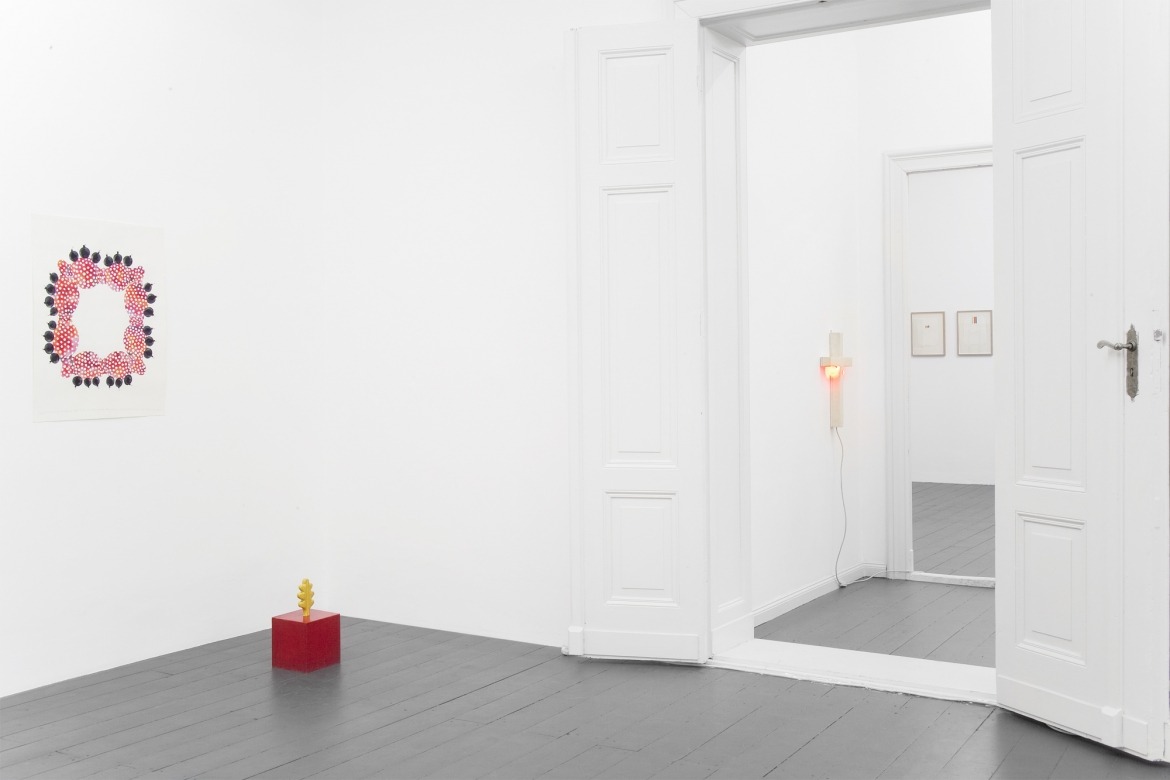
Verena Pfisterer, Installation view, 2015, EXILE
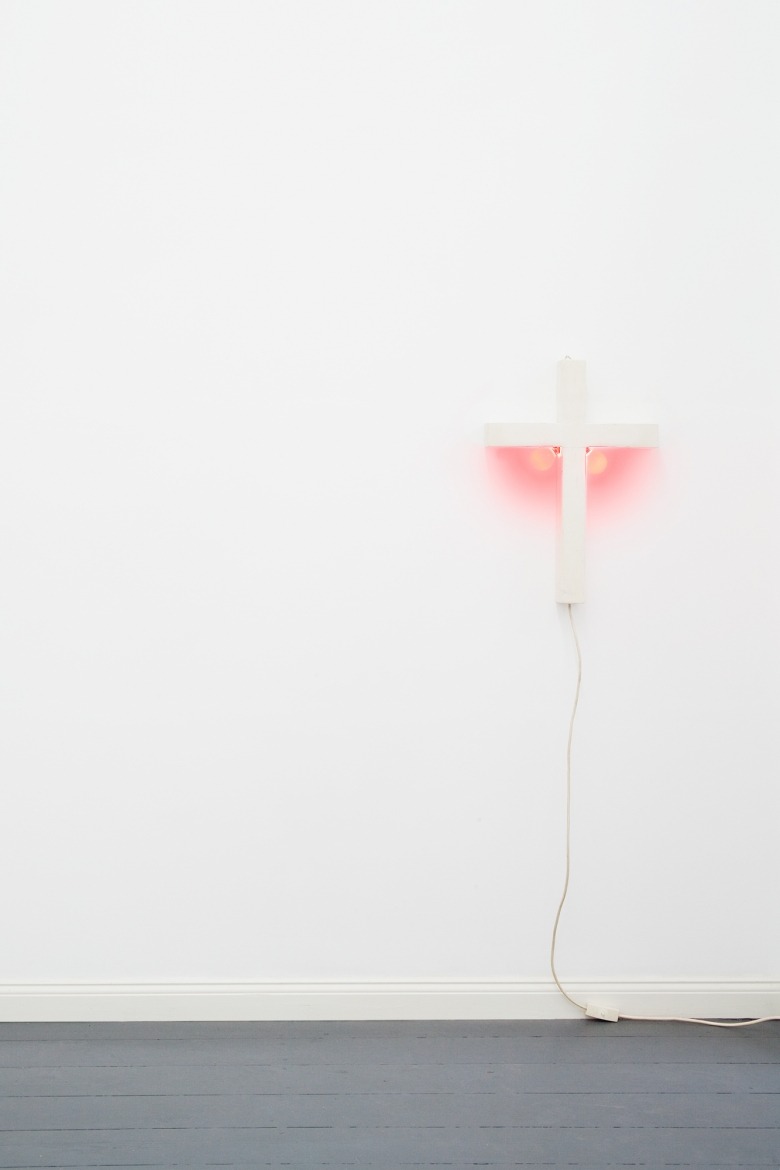
Verena Pfisterer, Weißes Achselbeulenkreuz, 1969,
painted wooden cross with two red lightbulbs and electric cable, 49 x 34 x 4.4 cm
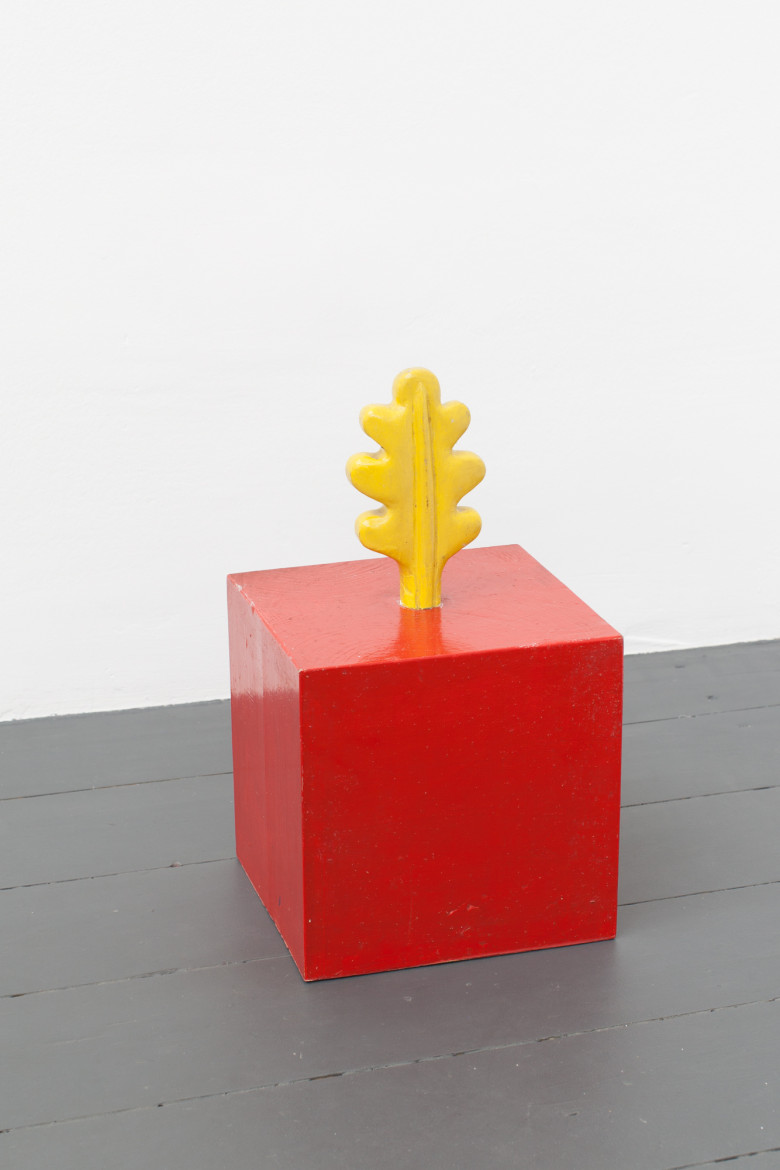
Verena Pfister, Eichenblattwürfel, 1967, painted wooden cube with hand-carved oak leaf, 19.5 x 19 x 18 cm
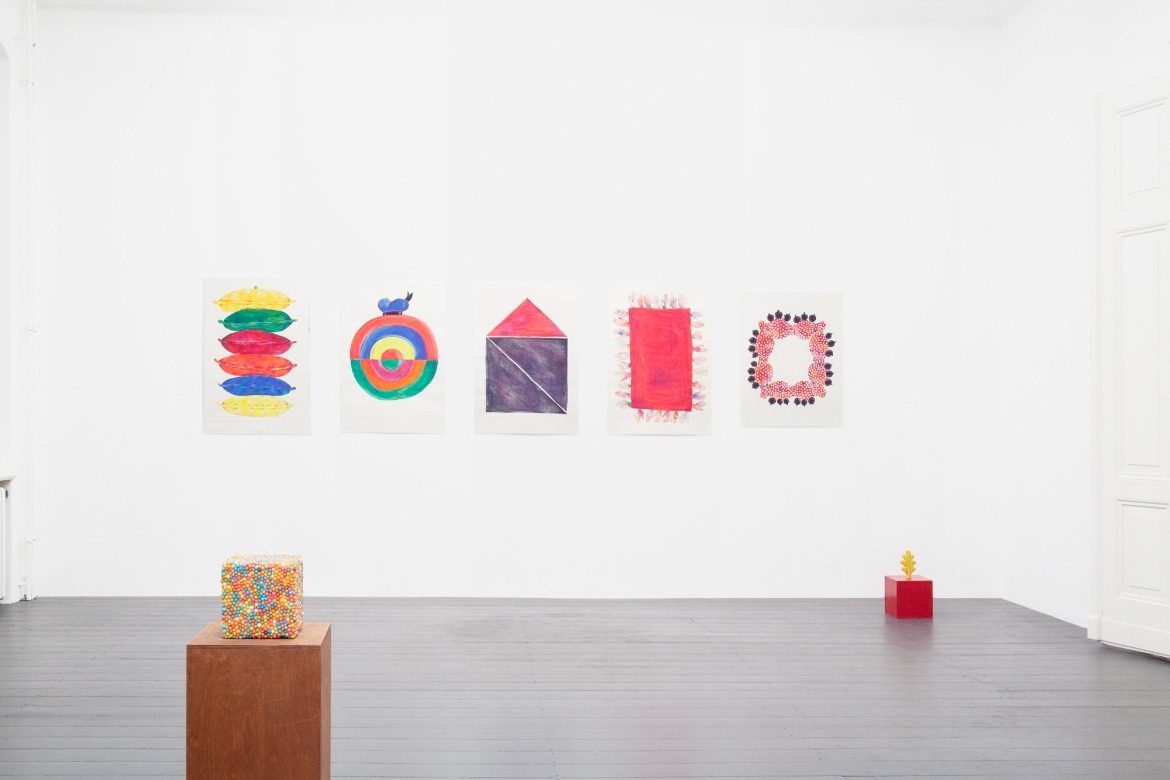
Verena Pfisterer, Installation view, 2015, EXILE
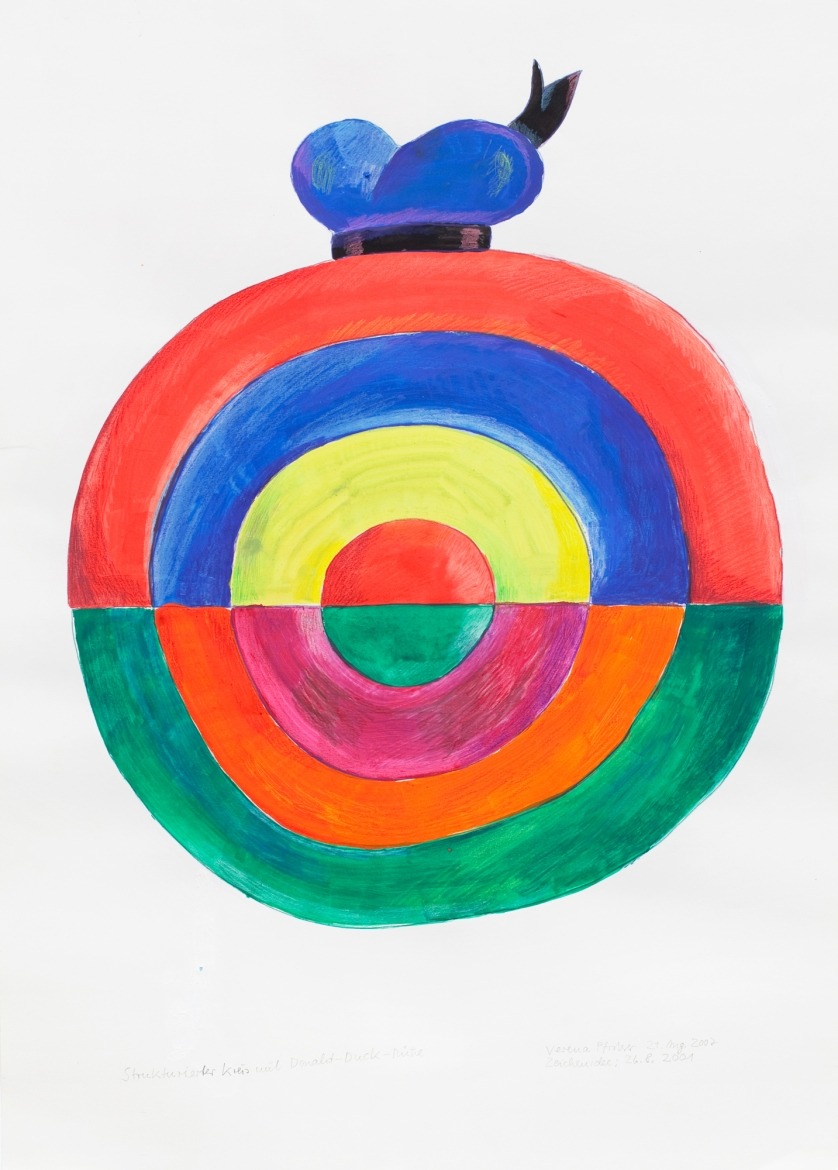
Verena Pfisterer, Strukturierter Kreis mit Donald-Duck-Mütze, 21. Aug. 2007, Zeichenidee 21. 8. 2001, color crayon and gouache on paper, 84 x 59 cm
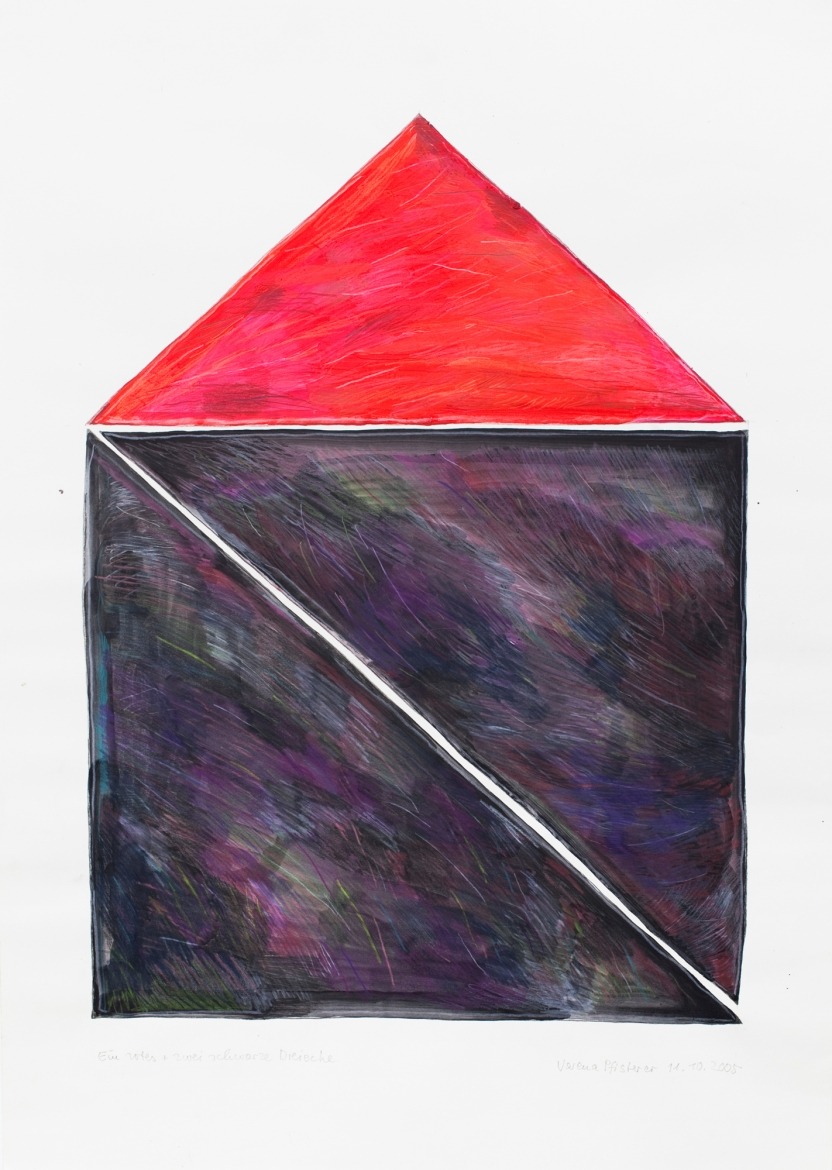
Verena Pfisterer, Ein rotes und zwei schwarze Dreiecke, 11.10.2005, 2005, color crayon and gouache on paper, 86 x 61 cm
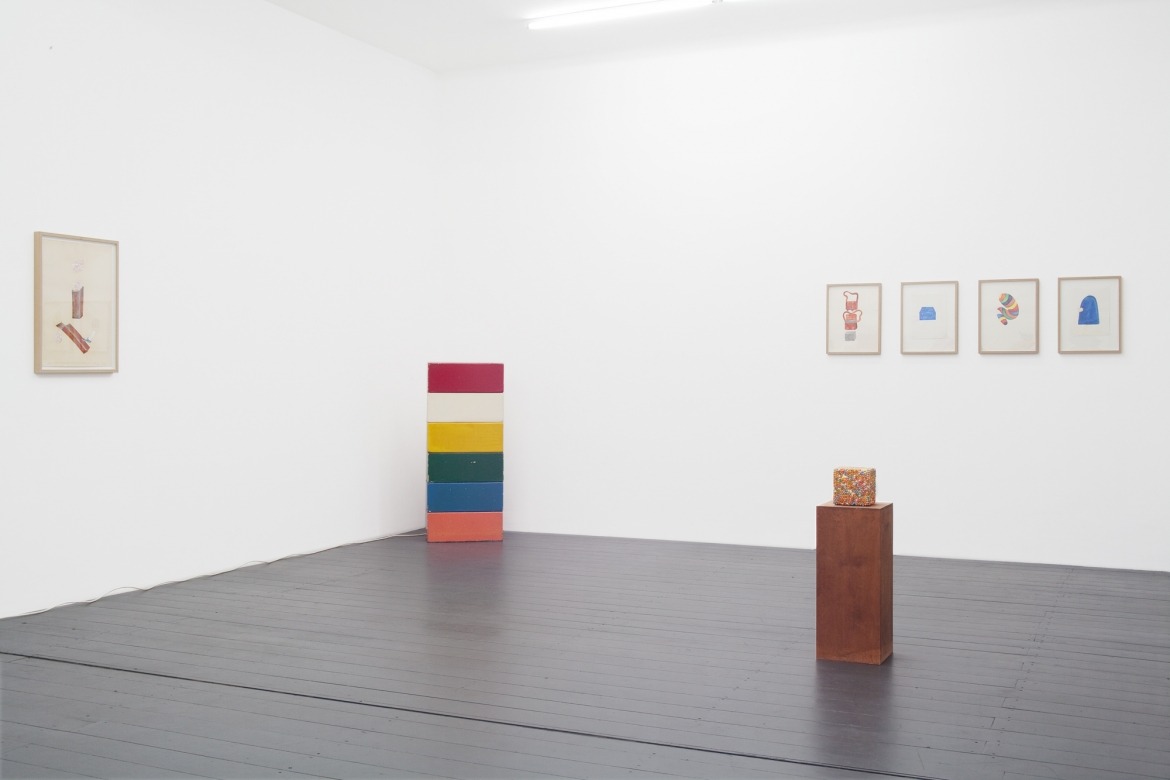
Verena Pfisterer, Installation view, 2015, EXILE
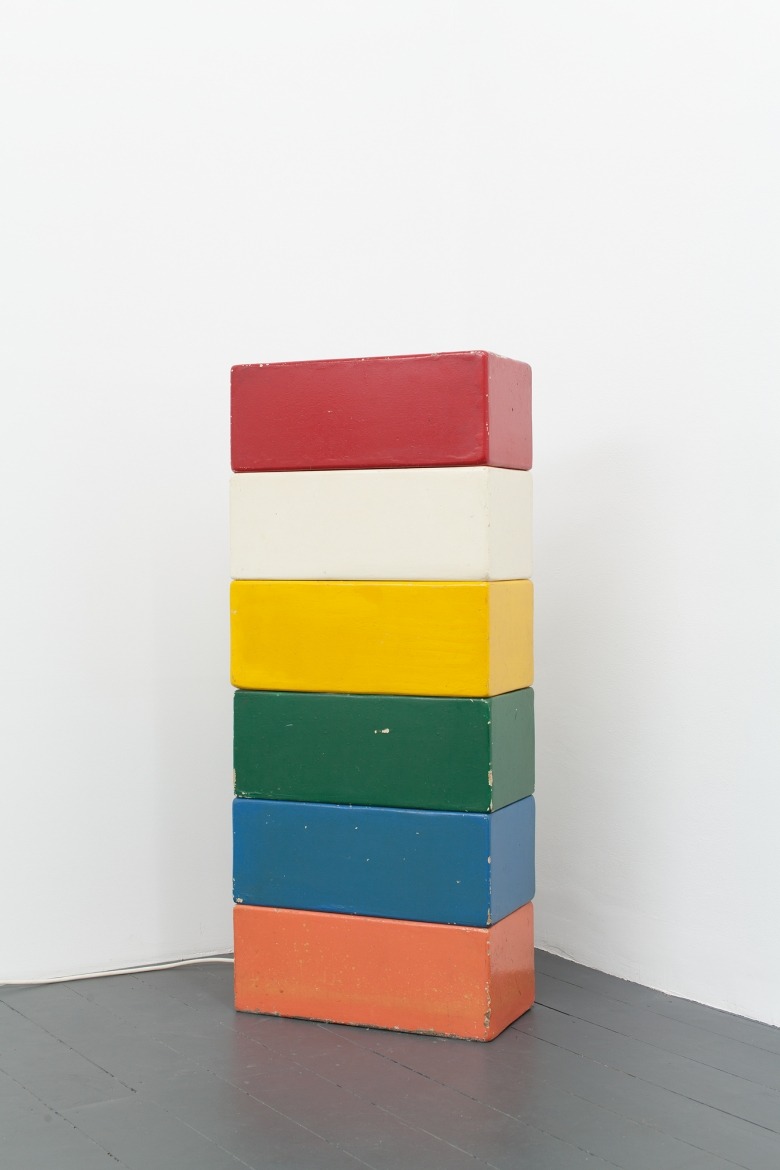
Verena Pfisterer, Menetekel,1971 Six stacked, hollow, and painted wooden cubes, colored fabrics, electrical components and lightbulbs, 117.5 x 49.5 x 24.5 cm
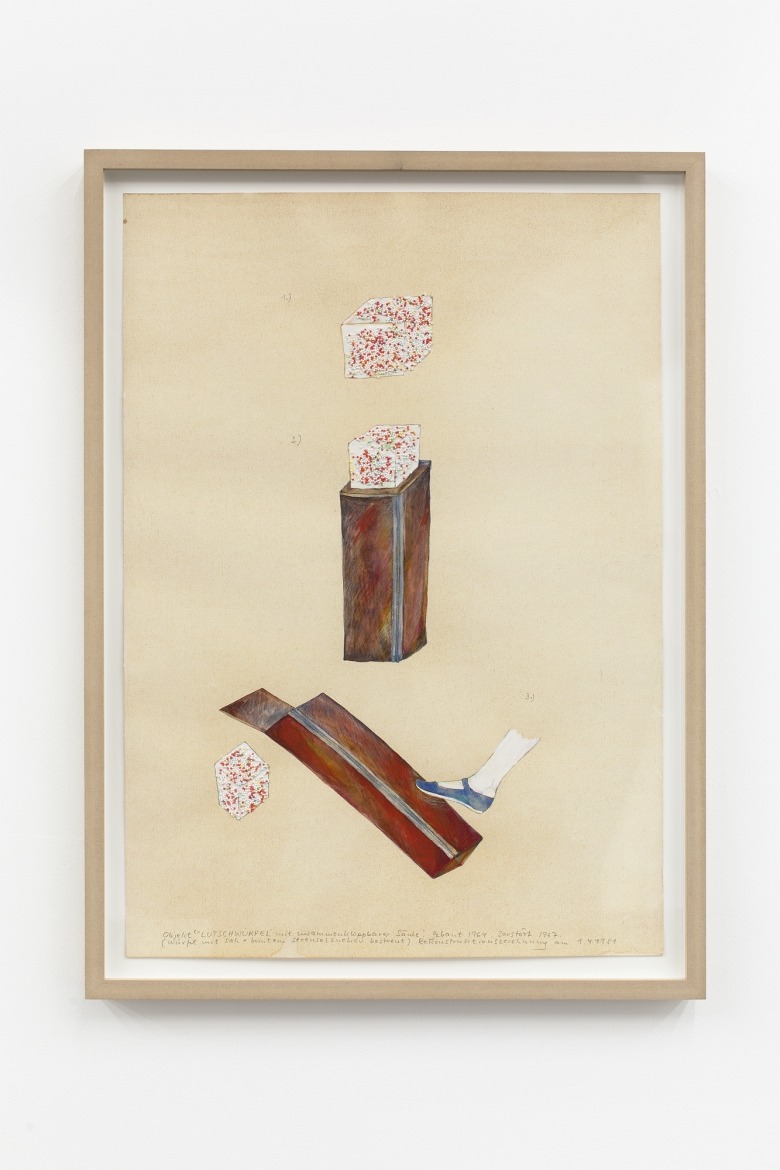
Verena Pfisterer, Objekt ‘“LUTSCHWÜRFEL” mit zusammenklappbarer Säule’. Gebaut 1964, zerstört 1967, (Würfel mit Salz + buntem Steuselzucker bestreut), rekonstruktionszeichnung am 1.4.1981,1981, color crayon and candy on paper, 59 x 41 cm
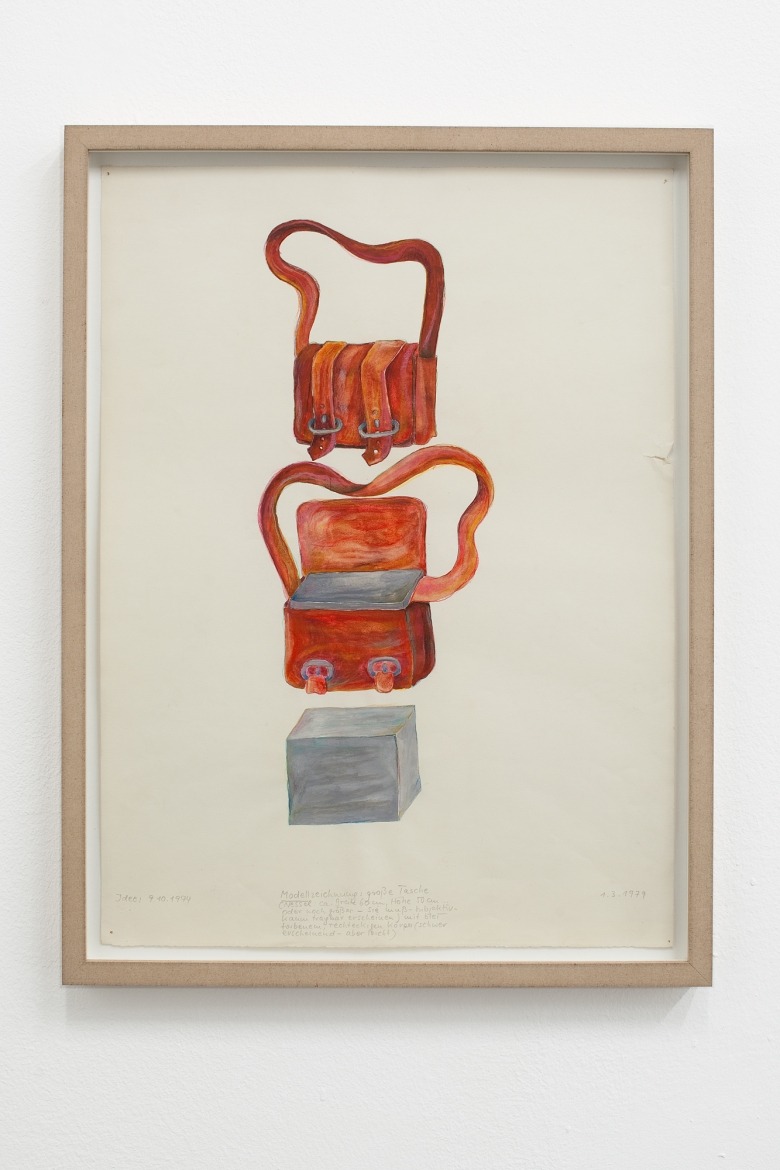
Verena Pfisterer, Modellzeichnung: große Tasche. (Nessel: ca Breite 60 cm, Höhe 50 cm,... oder noch größer - sie muß - subjektiv kaum tragbar erscheinen) mit bleifarbenem, rechteckigen Körper (schwer erscheinend - aber leicht), Idee: 9.10.1974, (Zeichnung:) 1.3.1979, 1979, color crayon and gouache on paper, 39.5 x 29 cm

Verena Pfisterer, Skizze zu der “Streifenfigur” Plastik, 28.10.1967, 1967, color crayon and gouache on paper, 39.5 x 29 cm
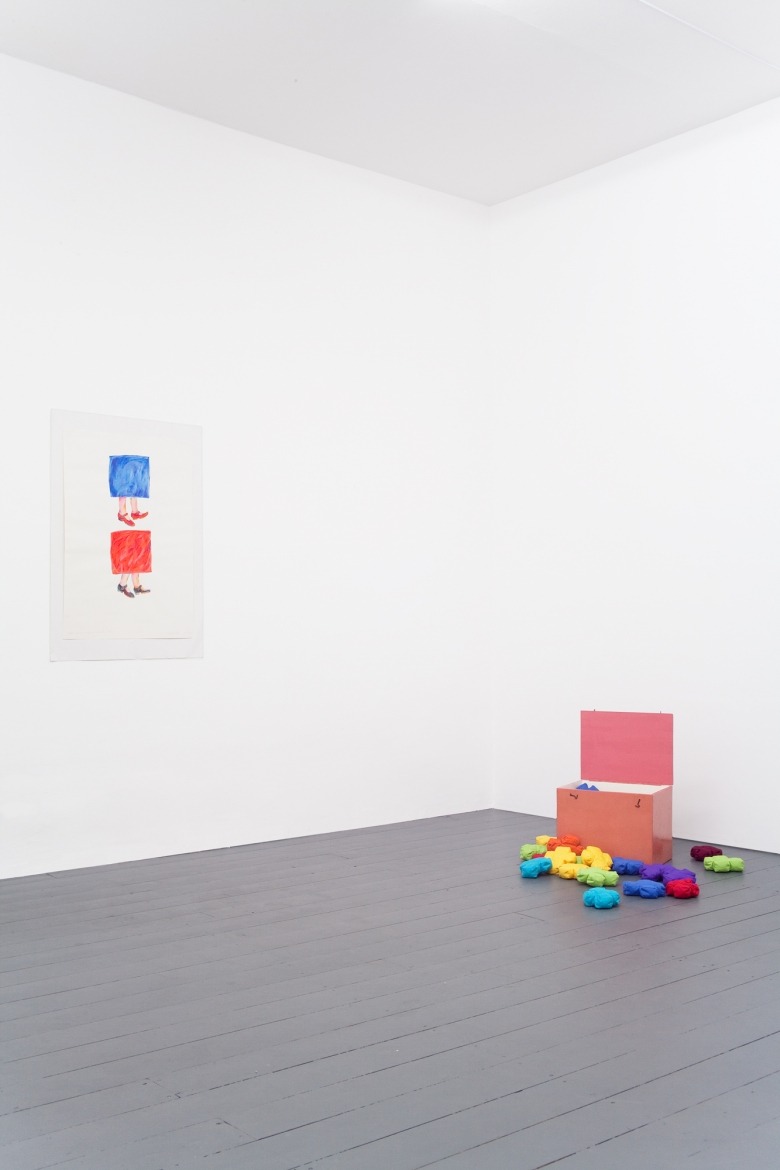
Verena Pfisterer, Installation view, 2015, EXILE
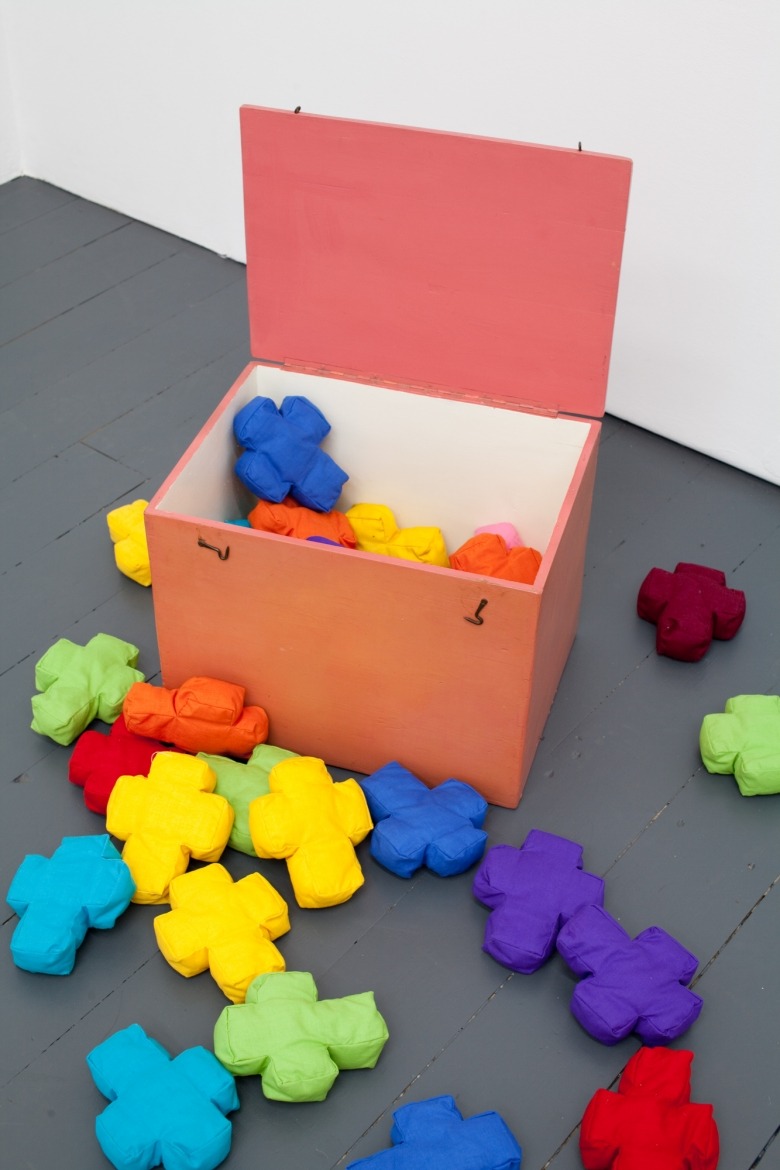
Verena Pfisterer, Rosa Kasten mit Stoffkreuzen, 1970, 37 artist-made, hand-stitched cloth crosses in various colors in painted wooden box, lambswool, fabric, yarn, wood and paint, 31 x 39.5 x 29.5 cm <br>
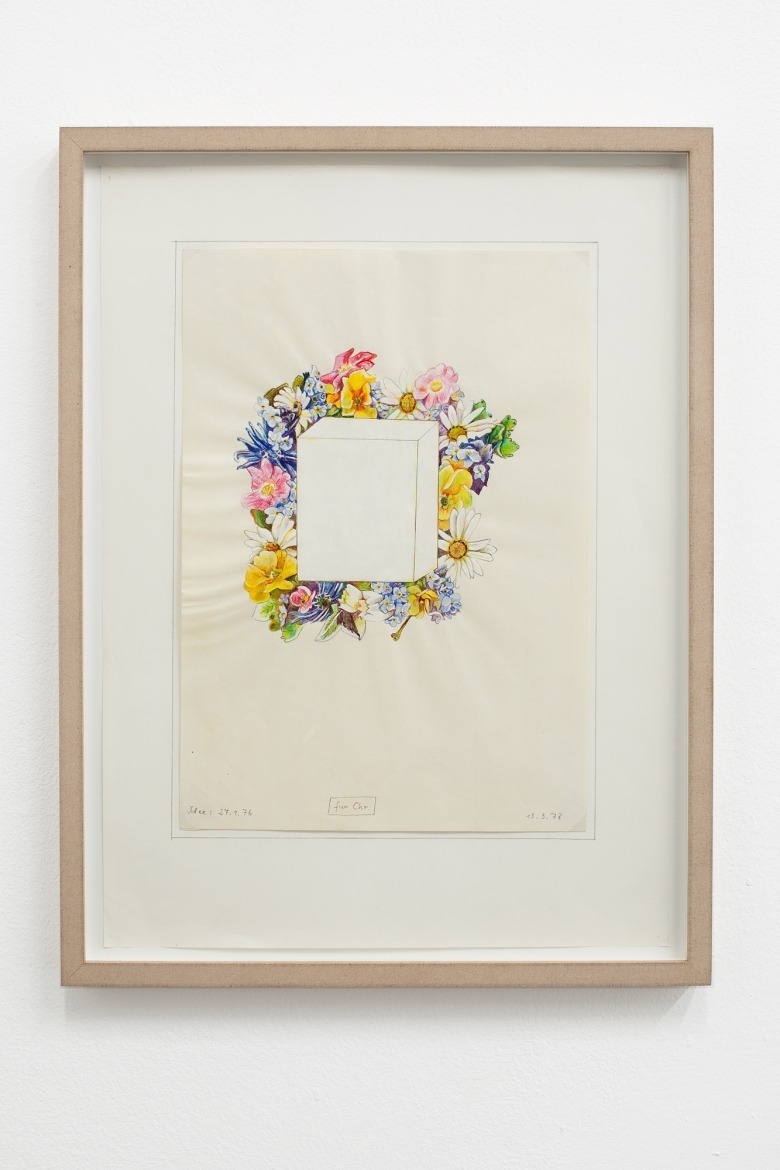
Verena Pfisterer, fuer Chr. Idee: 27.1. 1976, (Zeichnung:) 13.3.1978, 1978, color crayon and gouache on paper in artist-made paper mount, 39.5 x 29 cm
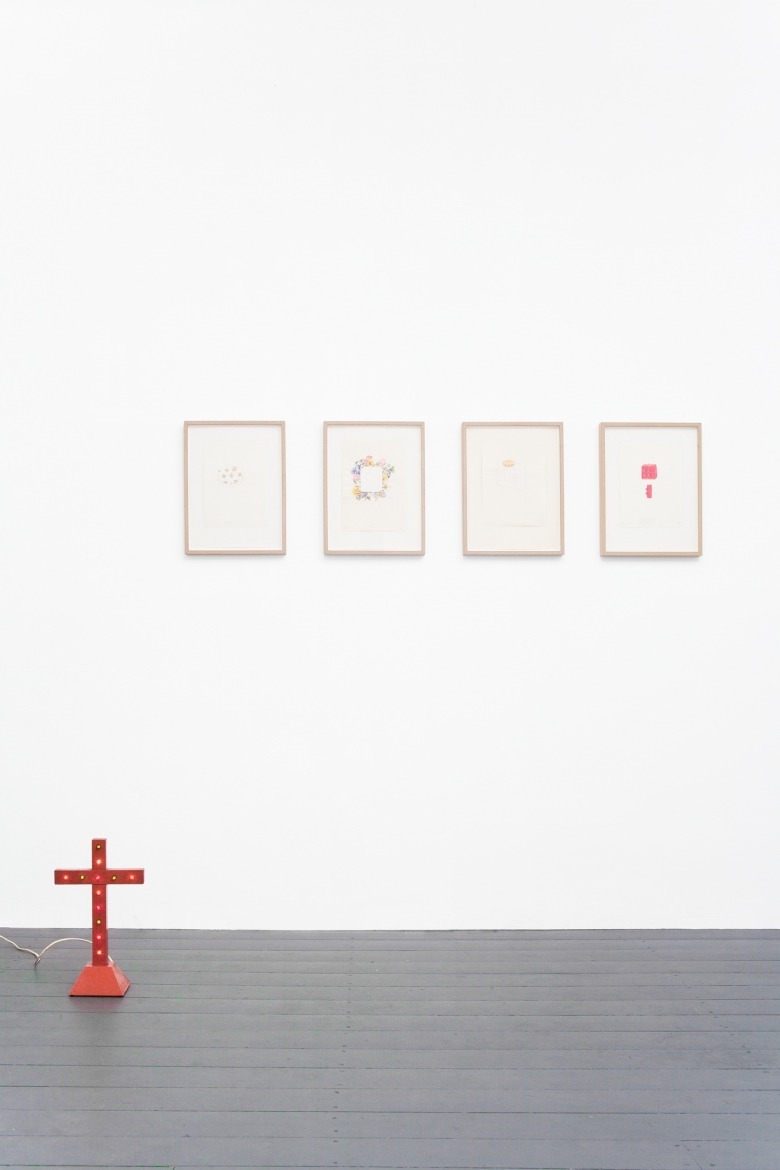
Verena Pfisterer, Installation view, 2015, EXILE

Verena Pfisterer, Installation view, 2015, EXILE

Verena Pfisterer, Zwei schwarze Quadrate + ein rotes Tuch mit weißen Punkten + Anarchobömbchen, 15. Januar 2002, color crayon and gouache on paper, mounted to paper, 86 x 61 cm
EXILE is pleased to present a solo exhibition of the work of artist Verena Pfisterer (1941-2013). The exhibition, curated by Silke Nowak, focuses on drawings and objects from the early and late stages of her artistic career. The selected works, most of which have never before been exhibited, are set in dialogue with each other and form a beginning and an end point from which to approach the work and persona of Verena Pfister.
Already at the early age of 17, Pfisterer joined the Junge Kunstkreis (JuKu), a group of young adults interested in art, which is where she also met her later peer and personal friend Franz Erhard Walther. From 1960 to 1963, Pfisterer studied at Städelschule in Frankfurt before entering Kunstakademie Düsseldorf from where she graduated in 1967. In Düsseldorf, Pfisterer became an active part of the art movement, participated in many exhibitions, happenings, and actions alongside artists such as Jörg Immendorff, Chris Reinecke and Reiner Ruthenbeck. She created experiential room-size environments such as Lichtbrunnen (1965), sculptures, which often contained moving or light elements, staged photographs, fashion drawings for women clothing, and participatory happenings.
Following art school, Pfisterer moved from Düsseldorf to Berlin. Motivated by the student protest and peace movements predominant in Berlin, Pfisterer shifted her focus from the perceived narrow margins of the Düsseldorf art scene to the ideas of social and political change. Here in Berlin, Pfisterer continued her artstic practice while simultaneously becoming deeply involved in socio-political activism. Her works were made to be used, touched, and interacted with as she opposed the limited context art was traditionally presented in.
By expanding the idea of the purpose and role of her art, Pfisterer wanted her art understood as participatory and integrative, aimed at a direct visceral interaction between the art work and the audience. Pfisterer understood her art as an active part embedded in the ideas for social change but never limited her interests to the arts alone. In 1975 she began to study psychology, philosophy and sociology at West Berlin’s Freie Universität and was awarded her doctorate in psychology in 1985.
From the mid 1970s, Pfisterer increasingly retreated from an active involvement in the arts, later becoming a professional therapist and occasional illustrator for magazines, but always continued her artistic practice, though now predominantly in private. Instead of creating actual objects she captured the ideas for such objects in very precise drawings and began to photograph her environment as a means of documenting her specific view. Simultaneously, she worked on various novels and texts and later published the comprehensive book Fotografie und Alltag.
From 2001 to 2004, Pfisterer’s work was revisited in exhibitions organized by Kienzle & Gmeiner Gallery in Berlin as well as in the group exhibition Kurze Karrieren at mumok, Museum of Modern Art, Vienna. These exhibitions motivated her to refocus on her early creative works, and produce large-scale drawings that partially reconnect to her early work while moving it forward into its own visual and conceptual language. Latest, in 2014, her hometown Fulda honored Pfisterer with the, to date, most comprehensive exhibition of her work at the Vonderau Museum.
Taking inspiration from her self-titled, though sadly only posthumously finished, catalogue Die Illusion der Freiheit der Kunst the exhibition pays homage to the multi-facetted, complex dimensions of the artist Verena Pfisterer. Through her very personal melange of academic and artistic interests she created an œvre that, while at all times playfully, often attributes to fairy-tales, christian symbolism, comics, craft, fashion and even kitsch; though her execution is in fact always carefully planned, highly specific and conceptually concise.
From today’s point of view, Pfisterer’s work continues to question the role of art in terms of its ability for social integration, the rapidly vanishing potential of art in the face of its own hyper-commodification, and of its potentially even regressive meaning for social development. The artist has left us with a body of work that, from many different approaches, remains incredibly timely and relevant for the situation of contemporary art and society today.
Selected further reading:
Annika Karpowski: Verena Pfisterer. Exhibition Review, Vonderau Museum, Fulda. in: Frieze d/e. Issue 18. March/April 2015 (external link, English)
Boris Wagner, Judith Schmutzer (Ed): Die Illusion der Freiheit der Kunst: Verena Pfisterer. Books on Demand, Norderstedt, 2014
Franz Erhard Walther: Sternenstaub. Ritter Verlag, Klagenfurt, 2009
Dominikus Müller: Verena Pfisterer in conversation. in: artnet, Mai 23, 2009 (external PDF, German)
Gregor K. Stasch (Ed): Verena Pfisterer – Lebensspuren einer Künstlerin. Michael Imhof Verlag, Fulda, 2014
Sabeth Buchmann und Susanne Leeb: Zufall mit System. Interview with Verena Pfisterer. in: Texte zur Kunst. Issue 44. Dec 2001 (external link, German)
Click here to read review by Astrid Mania for Texte zur Kunst (PDF)
Additional Event:
Saturday, Nov 28, 4 pm: Artist talk with Silke Nowak (exhibition curator, who met the artist in the years prior to her death in 2013), Dominikus Müller (editor frieze d/e, who was the last to interview the artist in 2009 for artnet) and Boris Wagner (Estate of Verena Pfisterer and son of the artist).

































